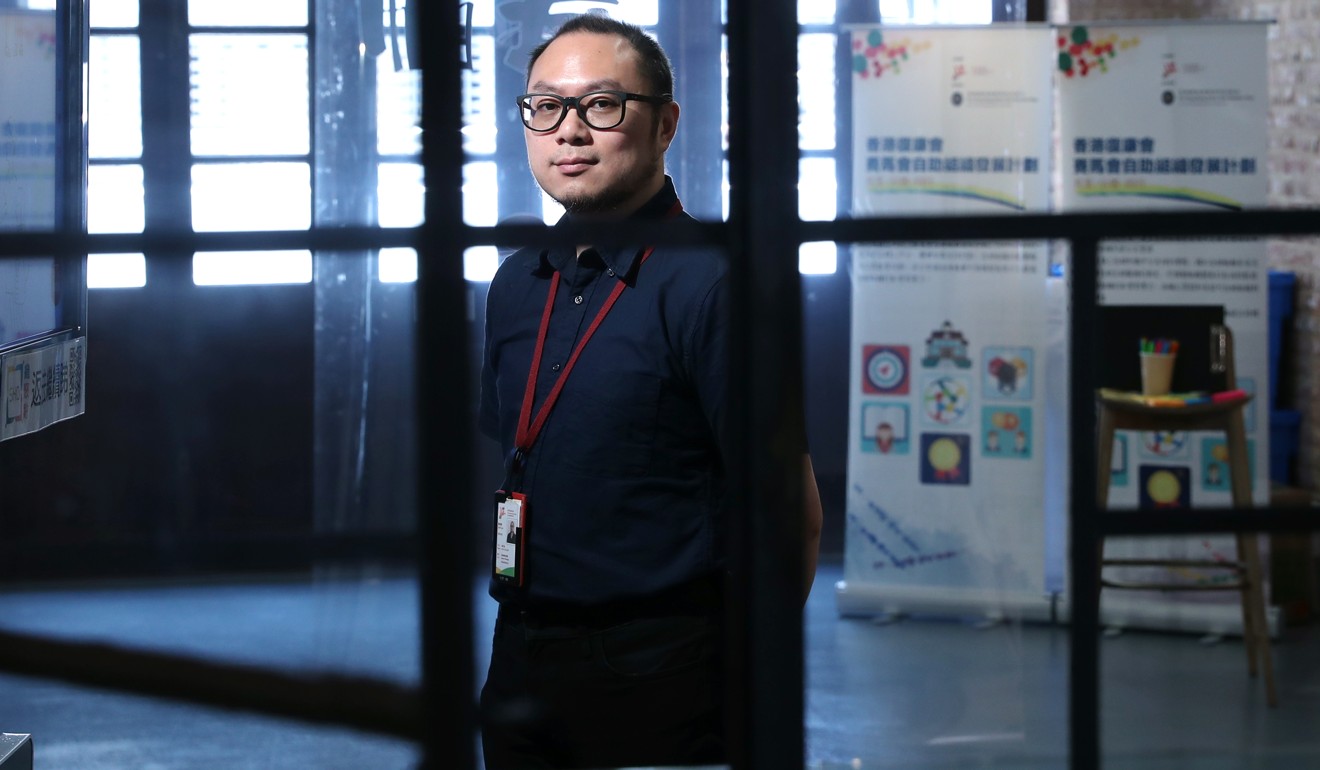
Chronic illness: don’t struggle in silence, Hong Kong’s 300 support groups tell city’s 1.4 million sufferers
- Wan Chai exhibition this month features an array of self-help organisations aiming to encourage patients to speak up instead of retreating into the shadows

At a health exhibition in Wan Chai, visitors crowd around a “clinic for self-diagnosis” – a wall that lists a ream of common ailments. There is no doctor or nurse on site to consult.
The conditions are not all exactly medical – they include forgetfulness, sloppiness and cellphone addiction. Patients can diagnose themselves according to the details given, and wrap coloured strings around knobs on the wall, each shade representing a source of help they usually turn to, such as parents or friends.
The interactive display is part of this month’s Mutual Help Human Library and Exhibition, held by the Hong Kong Society for Rehabilitation. The event seeks to raise awareness of more than 300 self-help groups in the city, particularly those dealing with stress-related disorders, but also terminal diseases such as cancer.
The groups send inspiring figures to the exhibition to talk about their experiences, such as patients with rare conditions and activists attempting to overcome social prejudice. The aim is to shed light on the struggle of some 1.4 million sufferers of chronic and mental illnesses in Hong Kong.

“To many people’s surprise, the line between ‘being sick’ and being well is not that clear, as a lot of commonly seen indispositions can be early signs of more severe illness,” society senior manager Pun Yau-wai says, citing headaches and insomnia as examples.
The self-diagnosis wall, a major feature of the event, echoes this point with the printed message: “We are all chronic patients in a way, but what’s more important is that there are people who walk beside you.”
Pun says: “We hope to remind Hongkongers who often say they are too busy to check their health that urban diseases are not far from us, and there can be serious consequences if signals from our bodies are neglected.”
The exhibition is also about encouraging patients to speak up and seek help from support groups instead of retreating into silence.
Pun says these organisations offer help often not available from medical workers, such as long-term companionship and rehabilitation, as well as advice on how to live independently.
“Each patient also sees how he or she can be useful and contribute to the community, rather than just being a recipient of help,” he says.
The exhibition delves into the history and development of self-help organisations in the city, some formed by patients, many largely unknown to the public.
Chan Kit-leung, 38, committee chairman for the Spina Bifida Support Group of Hong Kong, says making first contact with new sufferers is not easy.
“We’ve met so many hurdles, such as a lack of funds, manpower and promotion,” Chan says. “This exhibition is a rare opportunity to let people see and understand us.”
One in every 2,000 newborns in the city is diagnosed with spina bifida, a birth defect in which part of the spine has not correctly developed, leaving the nerves in the back without protection. Symptoms include hypaesthesia, and severe cases of the illness can result in death.
Founded in 1995 and now with 99 spina bifida families as members, Chan’s group organises lectures on patient nursing skills as well as home visits for members in need.
“For the parents of child patients, it is necessary to have a place to talk and share their struggles, or else they will just suppress their feelings,” Chan says.
Queenie Siu Fung-kou, attending the exhibition with her eight-year-old son, says she is surprised by the number of support groups in the city.
“I thought this would be a great chance for my boy to learn,” she says. “Anyone can get sick at any time, you just can’t predict it. So we really need to stay positive in life.”
Siu says the exhibition should be brought to poorer neighbourhoods to raise awareness among more underprivileged families.
The event will run at 7 Mallory Street until April 30, and has attracted more than 1,000 visitors since launching on April 19.
For social workers Angela Tam and Janet Kwan, both in their 20s, the sharing sessions for patients with rare diseases were a highlight.
“The more people feel scared, the less they want to hear about these people,” Tam says. “This kind of exhibition can help change that cycle of misperception.”